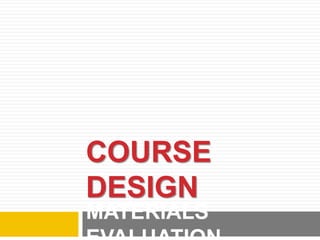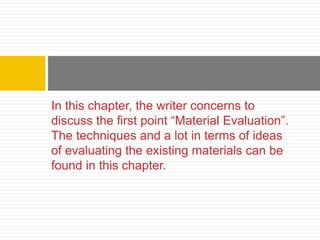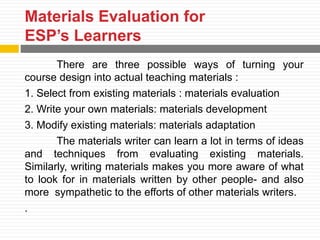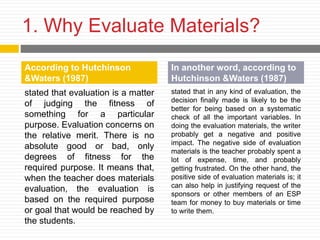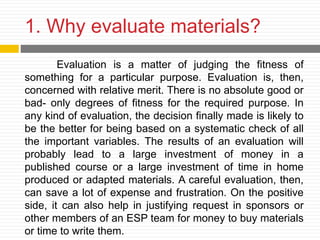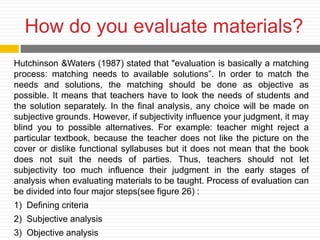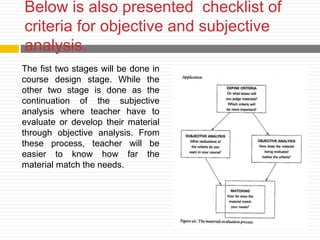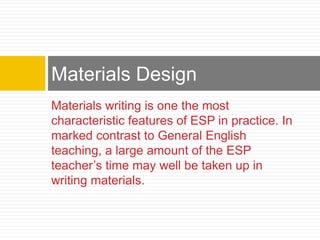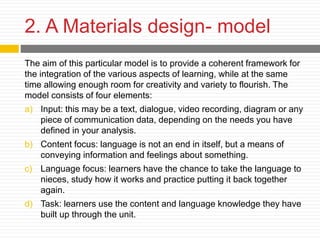The document discusses materials evaluation and design for English for Specific Purposes courses. There are three main ways to develop course materials: 1) select existing materials and evaluate their fit; 2) write new materials; or 3) adapt existing materials. When evaluating materials, it is important to do so systematically by defining criteria and objectives, and analyzing materials both subjectively and objectively. This will help ensure the materials are the best match for the intended purpose and learner needs.
